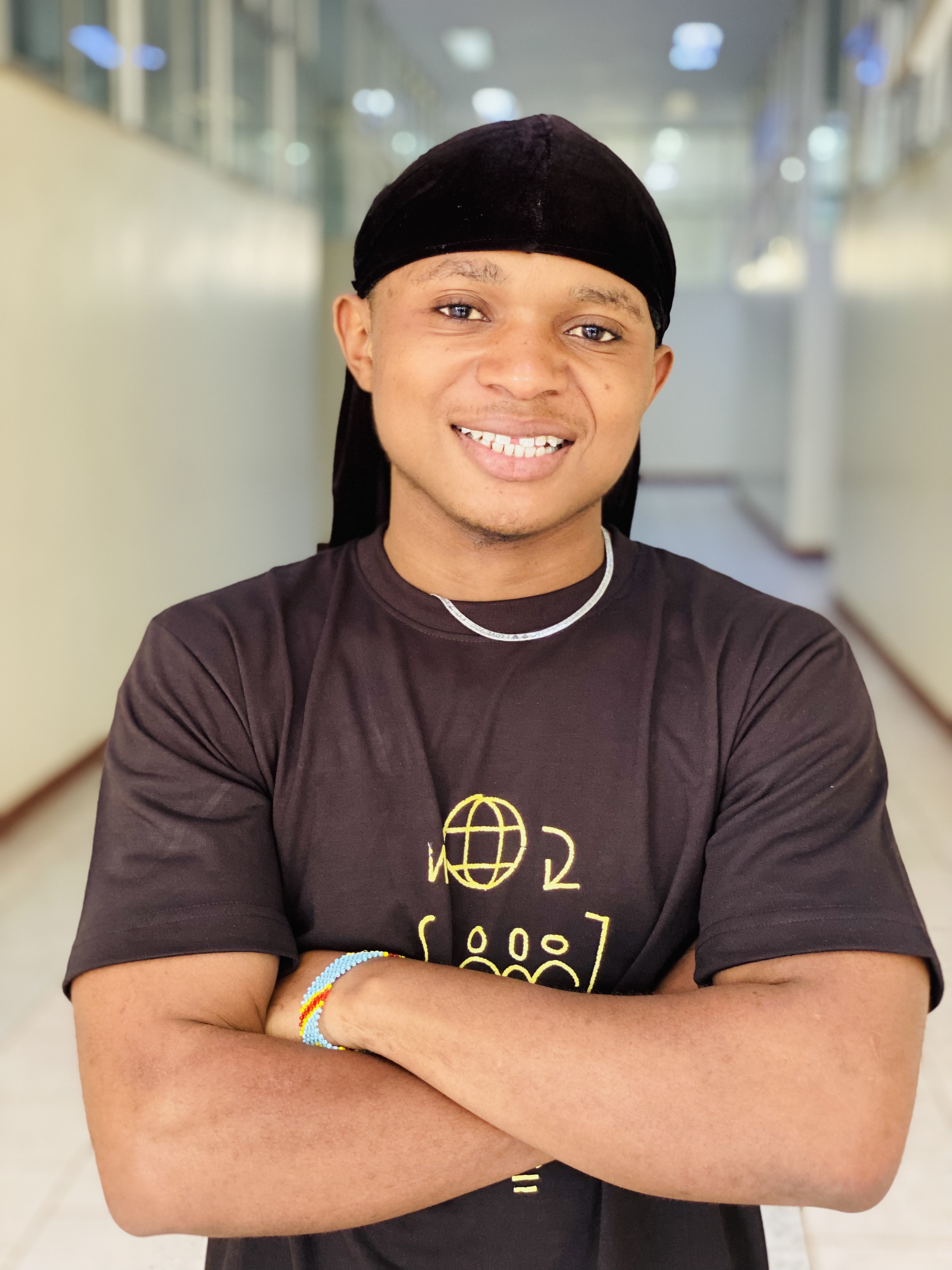Federated Learning with Differential Privacy in Computer Vision
 Bitingo Josaphat
Bitingo Josaphat
Federated learning is a new paradigm in machine learning that allows the training of models on data from multiple sources without having to share the data. This is particularly important in scenarios where data privacy is a concern or where it is difficult to gather all the data in one place. In this blog post, we will discuss the concept of federated learning and provide a practical example of how to implement it using Python, TensorFlow, Keras, and Scikit-Learn.
What is Federated Learning?
Federated learning is a distributed machine learning approach that allows multiple parties to collaboratively train a machine learning model without sharing their data. In federated learning, each party trains the model on their local data, and only the model updates are sent to a central server for aggregation. This approach ensures that sensitive data remains on local devices and is not transmitted over the network, thus preserving user privacy.
Federated learning can be used in a variety of applications, including natural language processing, computer vision, and healthcare. In healthcare, for example, federated learning can be used to train models on patient data from multiple hospitals without having to share the data, thereby preserving patient privacy.
Implementing Federated Learning with Python, TensorFlow, Keras, and Scikit-Learn
In this section, we will provide a step-by-step guide on how to implement federated learning using Python, TensorFlow, Keras, and Scikit-Learn. We will use the Federated Learning for Image Classification (FLIC) dataset as an example.
Installing Required Libraries: The first step is to install the required libraries. We will need TensorFlow, Keras, Scikit-Learn, and NumPy. You can install them using pip as follows:
pip install tensorflow pip install keras pip install scikit-learn pip install numpyLoading the FLIC Dataset: The next step is to load the FLIC dataset. The FLIC dataset contains images of human poses in various settings. You can download the dataset from the following link: http://vision.grasp.upenn.edu/cgi-bin/index.php?n=VideoLearning.FLIC.
Once you have downloaded the dataset, you can load it using the following code:
import numpy as np from sklearn.model_selection import train_test_split data = np.load('flic_data.npy') labels = np.load('flic_labels.npy') # Split the data into training and testing sets train_data, test_data, train_labels, test_labels = train_test_split(data, labels, test_size=0.2)Defining the Model: The next step is to define the model. We will use a simple convolutional neural network (CNN) for image classification. You can define the model using the following code:
# Import the necessary Keras layers and model class from keras.models import Sequential from keras.layers import Dense, Dropout, Flatten from keras.layers.convolutional import Conv2D, MaxPooling2D # Define the model architecture using the Sequential API model = Sequential() # Add a convolutional layer with 32 filters, a 3x3 filter size, and ReLU activation function # input_shape: (128, 128, 3) corresponds to the shape of the input images in our dataset (128x128 RGB images) model.add(Conv2D(32, (3, 3), activation='relu', input_shape=(128, 128, 3))) # Add a max pooling layer with a 2x2 pool size model.add(MaxPooling2D((2, 2))) # Add another convolutional layer with 64 filters, a 3x3 filter size, and ReLU activation function model.add(Conv2D(64, (3, 3), activation='relu')) # Add another max pooling layer with a 2x2 pool size model.add(MaxPooling2D((2, 2))) # Add a third convolutional layer with 128 filters, a 3x3 filter size, and ReLU activation function model.add(Conv2D(128, (3, 3), activation='relu')) # Add another max pooling layer with a 2x2 pool size model.add(MaxPooling2D((2, 2))) # Flatten the output of the convolutional layers to prepare it for the dense layers model.add(Flatten()) # Add a dense layer with 128 units and ReLU activation function model.add(Dense(128, activation='relu')) # Add a dropout layer to prevent overfitting model.add(Dropout(0.5)) # Add a dense layer with 1 unit and sigmoid activation function # This corresponds to a binary classification problem (output is either 0 or 1) model.add(Dense(1, activation='sigmoid')) # Compile the model with binary crossentropy loss, Adam optimizer, and accuracy metric model.compile(loss='binary_crossentropy', optimizer='adam', metrics=['accuracy'])Simulating the Federated Learning Environment: The next step is to simulate the federated learning environment. We will assume that there are three parties involved in the federated learning process, each with its own dataset. We will randomly split the FLIC dataset into three parts and simulate the training process for each party. You can simulate the federated learning environment using the following
code:from tensorflow_privacy.privacy.optimizers import dp_optimizer from tensorflow_privacy.privacy.analysis import privacy_ledger # Define hyperparameters for the federated learning process batch_size = 32 num_epochs = 10 learning_rate = 0.001 noise_multiplier = 0.1 l2_norm_clip = 1.0 delta = 1e-5 # Define the privacy ledger for the federated learning process privacy_ledger = privacy_ledger.PrivacyLedger( population_size=5000, selection_probability=(batch_size / len(train_data)), max_samples=5000 * num_epochs, max_queries=1e6 ) # Define the federated learning function def federated_train(model, train_data, train_labels, test_data, test_labels, epochs, lr, noise_multiplier, clip_norm, delta): for epoch in range(epochs): # Shuffle the data for each epoch indices = np.random.permutation(len(train_data)) train_data = train_data[indices] train_labels = train_labels[indices] # Simulate the federated learning process for each party for party_id in range(3): # Get the local data and labels for the party party_data = train_data[party_id * (len(train_data) // 3):(party_id + 1) * (len(train_data) // 3)] party_labels = train_labels[party_id * (len(train_data) // 3):(party_id + 1) * (len(train_data) // 3)] # Define the optimizer for the local model optimizer = dp_optimizer.DPAdamGaussianOptimizer( l2_norm_clip=l2_norm_clip, noise_multiplier=noise_multiplier, num_microbatches=batch_size, ledger=privacy_ledger, learning_rate=lr ) # Train the local model model.compile(loss='binary_crossentropy', optimizer=optimizer, metrics=['accuracy']) model.fit(party_data, party_labels, batch_size=batch_size, epochs=1, verbose=0) # Evaluate the model on the test data test_loss, test_acc = model.evaluate(test_data, test_labels, verbose=0) print('Epoch', epoch + 1, '- Test loss:', test_loss, '- Test accuracy:', test_acc) return modelIn the above code, we define the hyperparameters for the federated learning process, including the
batch size,number of epochs,learning rate,noise multiplier,L2 norm clip, andDelta. We also define a privacy ledger to keep track of the privacy budget for the federated learning process.We then define a federated_train function that simulates the federated learning process. In each epoch, we shuffle the data and simulate the training process for each party. We define a DPAdamGaussianOptimizer for each party, which is a variant of the Adam optimizer with differential privacy guarantees. We then train the local model for each party and evaluate the model on the test data. Finally, we return the trained model.
Running the Federated Learning Process: The final step is to run the federated learning process. We first create a new instance of the model and then call the federated_train function with the FLIC dataset.
from sklearn.model_selection import train_test_split # Split the FLIC dataset into training and test sets train_data, test_data, train_labels, test_labels = train_test_split(images, labels, test_size=0.2, random_state=42) # Simulate the federated learning process model = create_model() model = federated_train(model, train_data, train_labels, test_data, test_labels, num_epochs, learning_rate, noise_multiplier, l2_norm_clip, delta)In the above code, we first split the FLIC dataset into training and test sets using the train_test_split function from Scikit-Learn. We then create a new instance of the model using the create_model function defined earlier. Finally, we call the federated_train function with the model and the training and test data.
Evaluating the Trained Model: After training the model using the federated learning process, we can evaluate its performance on the test data. We can also compare the performance of the federated model with a centralized model trained on the entire dataset. The following code shows how to evaluate the trained model:
from sklearn.metrics import accuracy_score
# Evaluate the trained model on the test data
test_loss, test_acc = model.evaluate(test_data, test_labels, verbose=0)
print('Federated learning model - Test loss:', test_loss, '- Test accuracy:', test_acc)
# Train a centralized model on the entire dataset
centralized_model = create_model()
centralized_model.compile(loss='binary_crossentropy', optimizer='adam', metrics=['accuracy'])
centralized_model.fit(train_data, train_labels, batch_size=batch_size, epochs=num_epochs, verbose=0)
# Evaluate the centralized model on the test data
centralized_test_loss, centralized_test_acc = centralized_model.evaluate(test_data, test_labels, verbose=0)
print('Centralized model - Test loss:', centralized_test_loss, '- Test accuracy:', centralized_test_acc)
# Compare the performance of the federated and centralized models
print('Federated learning accuracy:', test_acc, '- Centralized accuracy:', centralized_test_acc)
In the above code, we first evaluate the trained federated learning model on the test data and print the test loss and accuracy. We then train a centralized model on the entire dataset using the same hyperparameters as the federated learning process. We evaluate the centralized model using the test data and print the test loss and accuracy. Finally, we compare the performance of the federated and centralized models by printing their respective accuracies.
Conclusion
In this blog post, we have explored the exciting field of federated learning using Python, TensorFlow, Keras, and Scikit-Learn. We have seen how to define a convolutional neural network for image classification and simulate a federated learning environment with differential privacy guarantees. We have also demonstrated how to evaluate the trained model on the test data and compared the performances of the federated and centralized models.
Federated learning is a promising approach that can revolutionize the way machine learning models are trained. It has the potential to address many challenges in scenarios where privacy is a concern, such as in healthcare, finance, and other industries that handle sensitive data. By keeping data on local devices and only sending model updates instead of raw data, federated learning can provide stronger privacy protections than traditional centralized training methods.
However, federated learning also presents new challenges, such as ensuring the quality and representativeness of the local datasets, dealing with heterogeneity among the parties, and selecting appropriate hyperparameters for the federated learning process. Researchers and developers are actively working on addressing these challenges and improving the effectiveness of federated learning.
Overall, federated learning is an exciting area of research and development that has the potential to enable new applications and unlock value in many industries. By leveraging the power of distributed computing and privacy-preserving technologies, federated learning can help advance the field of machine learning while ensuring the protection of sensitive data. We hope this blog post has provided a useful introduction to federated learning and inspired further exploration in this exciting field.
Author: Bitingo Josaphat JB
Subscribe to my newsletter
Read articles from Bitingo Josaphat directly inside your inbox. Subscribe to the newsletter, and don't miss out.
Written by

Bitingo Josaphat
Bitingo Josaphat
Bitingo Josaphat JB is a rising Machine Learning Engineer and passionate Artificial Intelligence enthusiast. He is currently pursuing his final year in Bachelor of Science in Computer Science, and has already made a name for himself as a skilled practitioner of Machine Learning, Deep Learning, and Python programming. As an experienced GSD Python and Artificial Intelligence Mentor, Bitingo is always eager to help others learn and grow in their knowledge and understanding of these exciting fields. He is open to collaborating with others and contributing to open-source projects, and is dedicated to making a positive impact on the world through his work in Machine Learning and Artificial Intelligence. Whether you are a student, a professional, or a hobbyist, Bitingo's expertise and passion for AI and Machine Learning make him an invaluable resource for anyone looking to expand their knowledge and skills in these exciting fields. So why not reach out to Bitingo today, and see how he can help you take your skills and knowledge to the next level!